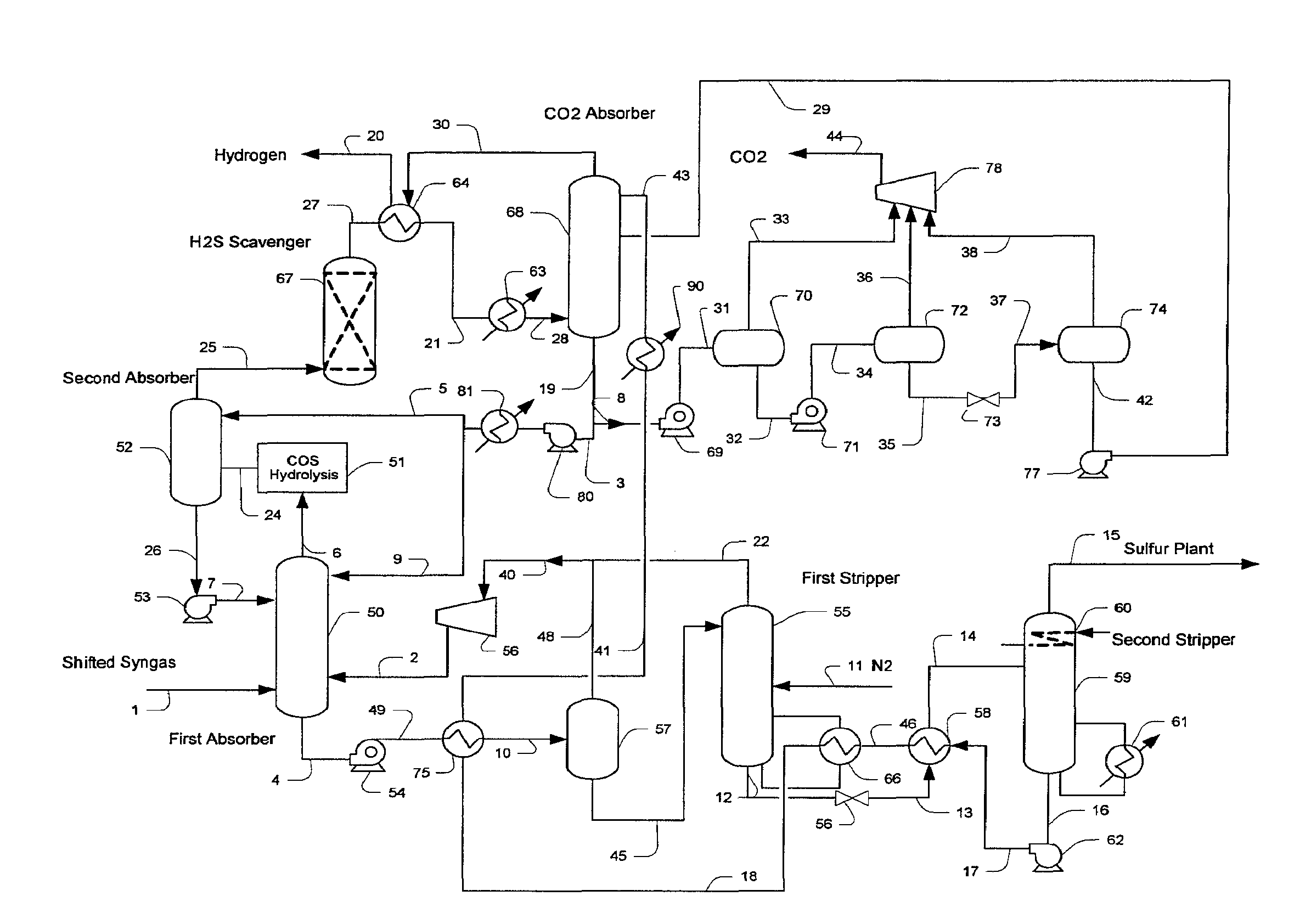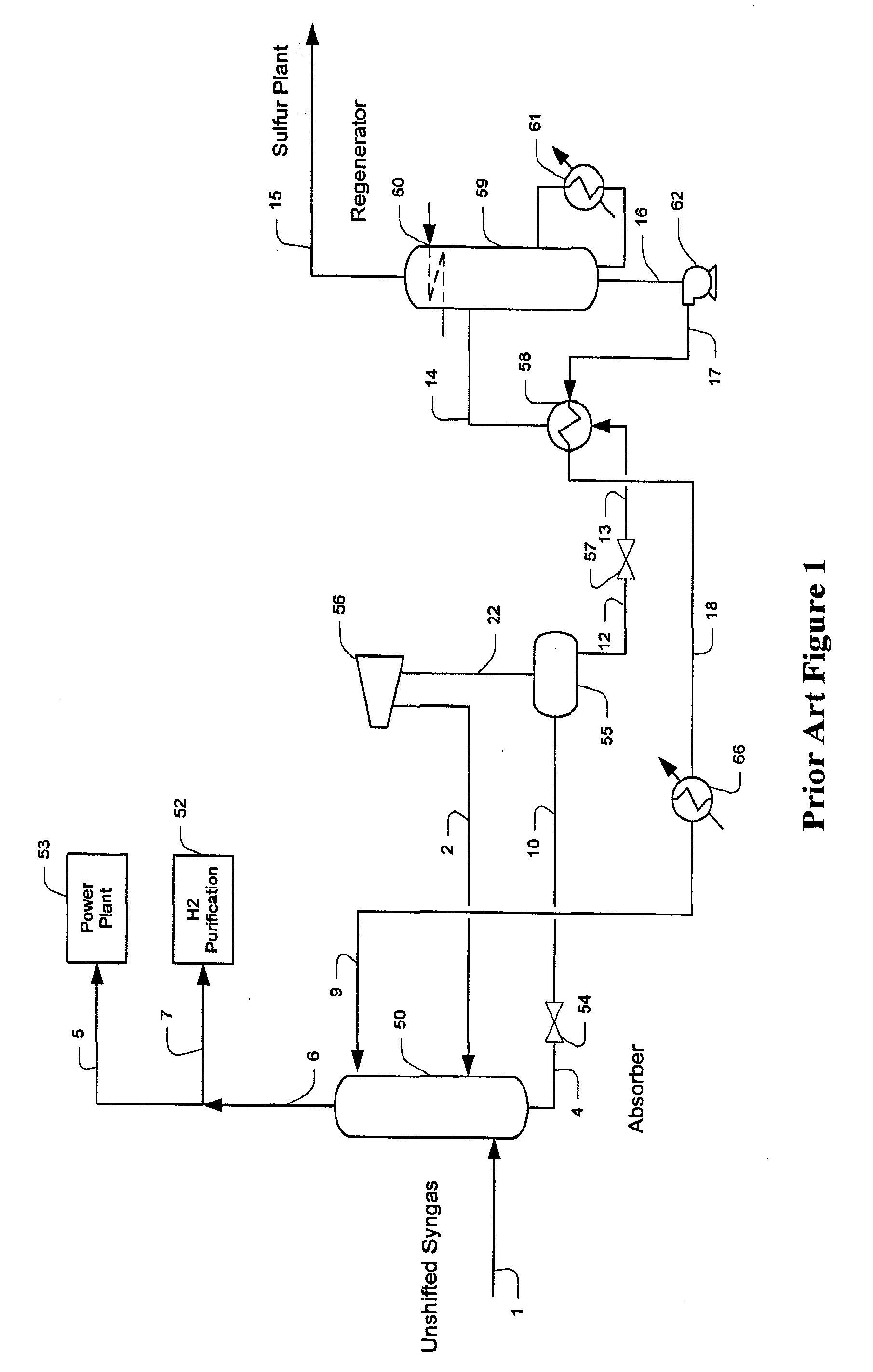Configurations And Methods For Carbon Dioxide And Hydrogen Production From Gasification Streams
a technology of gasification stream and carbon dioxide, which is applied in the direction of hydrogen separation using liquid contact, sulfur preparation/purification, separation process, etc., can solve the problems of high cost, high cost, and high cost of all or almost all of these processes, and achieve significant energy savings
- Summary
- Abstract
- Description
- Claims
- Application Information
AI Technical Summary
Benefits of technology
Problems solved by technology
Method used
Image
Examples
Embodiment Construction
[0023]The present invention is directed to plant configurations and methods for treatment of syngas gas comprising H2, CO2, CO, H2S, and COS, in which hydrogen sulfide is removed in a first section, and in which carbon dioxide is removed in a second section. Contemplated sections include absorbers in which a single solvent or separate and distinct solvents are used to absorb the respective acid gas components. H2S rich solvent is preferably regenerated in one or more strippers using external heat, while CO2 rich solvent is preferably regenerated by flashing of the solvent to lower pressures. In especially preferred plants, H2S absorption is performed upstream of CO2 absorption.
[0024]Where the carbon dioxide concentration in the syngas is relatively low (e.g., unshifted syngas), the solvent circulation and the solvent type for the H2S and CO2 absorber sections may be separate and different. On the other hand, where the carbon dioxide concentration in the syngas is relatively high (e....
PUM
| Property | Measurement | Unit |
|---|---|---|
| temperature | aaaaa | aaaaa |
| temperature | aaaaa | aaaaa |
| pressure | aaaaa | aaaaa |
Abstract
Description
Claims
Application Information
 Login to View More
Login to View More - R&D
- Intellectual Property
- Life Sciences
- Materials
- Tech Scout
- Unparalleled Data Quality
- Higher Quality Content
- 60% Fewer Hallucinations
Browse by: Latest US Patents, China's latest patents, Technical Efficacy Thesaurus, Application Domain, Technology Topic, Popular Technical Reports.
© 2025 PatSnap. All rights reserved.Legal|Privacy policy|Modern Slavery Act Transparency Statement|Sitemap|About US| Contact US: help@patsnap.com



